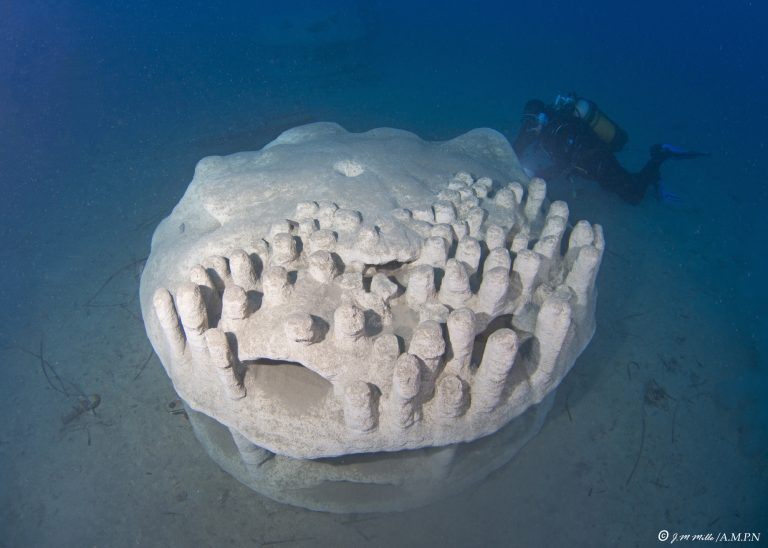
Conference June 20, 2018 : Artificial reefs, modern visions of a centuries-old concept
Events
Oceanographic Museum of Monaco, June 20, 2018
This conference presented everything you always wanted to know about artificial reefs but were afraid to ask: from the first reefs in Monaco to the most recent reefs, printed in 3D.
Led by Professor Patrice Francour, deputy director of the ECOMERS laboratory (Nice Sophia Antipolis University, CNRS) and former president of the Récifs Prado scientific council.
The first artificial reefs date back to the 17th century and were submerged in Japan, the undisputed leader in this field. Currently, around the world, they serve to conserve, restore and enhance coastal ecosystems and associated ecological services. Defined simply as submerged structures, deliberately placed on the seabed, they seek to mimic certain characteristics of natural rocky reefs. In the Mediterranean, their immersion began during the 20th century, but these operations only gained momentum after 2000. In Monaco, the first artificial reefs are associated with the creation of the marine protected area of Larvotto , forty years ago. In France and Monaco, artificial reefs are mainly used as tools to support small-scale fisheries or to restore degraded seabeds. They have generally quite simple forms, not very complex at the architectural level and are mainly made of concrete.
The recent craze for artificial reefs has been mainly motivated by the extent of degradation in the coastal zone and the stated desire to find solutions to remedy it. But how could this ancient concept of artificial concrete reefs evolve in an attempt to meet these challenges?
Recent advances in technology have led to the design of much more complex artificial reefs using 3D printing. The use of natural materials, mainly Dolomite sand, now also makes it possible to offer ecological reefs. Thanks to the combined efforts of the Monegasque Association for the Protection of Nature, the Boskalis company and the Prince Albert II of Monaco Foundation, six 3D printed reefs were submerged in November 2017 in the Larvotto MPA: a first in the Mediterranean and globally by the size of the reefs. The research launched upstream of this project in Monaco with international scientific teams is original, innovative and will allow us to advance our knowledge in the field of artificial reefs, both in terms of management (how to set up a relevant immersion program for artificial reefs), and in scientific terms (which designs, which materials).
The presentation is accessible at this link
